Description
In the high-stakes arena of industrial automation, where safety interlocks and actuator commands must execute flawlessly to avert process deviations or equipment damage, engineers frequently encounter the pitfalls of unreliable digital outputs that falter under fault conditions or wiring stresses. Imagine a safety instrumented system in a gas compression station or a drive control loop in heavy manufacturing: discrete commands to solenoids, relays, or pilot lights demand unyielding precision, yet standard modules often succumb to single-point failures, electromagnetic noise, or undetected shorts, triggering spurious trips or delayed responses that erode uptime and inflate compliance costs. This is precisely the gap the ICS Triplex T8461 fills as a TMR digital output module, engineered to deliver fault-tolerant command signaling in process control architectures where high reliability is non-negotiable.
Demand for such robust I/O surges in SIL 2/3 certified setups, like emergency shutdown sequences or burner flame proofs, where a dropped output pulse could cascade into hazardous overpressures or stalled batches. Drawing from deployments I’ve guided in petrochemical nodes, teams often battle output drift from marginal isolation or inadequate diagnostics, leading to overprovisioned redundancies that bloat budgets and complicate commissioning. The ICS Triplex T8461 redefines this dynamic by embedding triple modular redundancy at the channel level, ensuring voted outputs persist through slice faults while line monitoring catches wiring anomalies before they propagate. In industrial automation governed by IEC 61508, it fortifies the output layer against transients, enabling seamless integration into TMR controllers without the drag of external safeguards.
At its core, the ICS Triplex T8461 empowers deterministic control, transforming volatile field commands into a stable foundation for automation resilience. It’s the module that anticipates the unforgiving realities of live operations—vibrations jarring connections, surges testing barriers—delivering the output integrity that safeguards both people and productivity.
When architecting a Trusted TMR chassis for critical loops, the ICS Triplex T8461 slots in as the decisive edge for driving field effectors, interfacing 40 triplicated channels to the Inter-Module Bus (IMB) that links it to the TMR processor’s voting core. Each slice—three identical circuits per channel—handles 24/48 Vdc sourcing to loads like contactors or indicators, with sigma-delta modulation ensuring synchronized state changes across the triad before the voted output energizes the field. Positioned downstream in the I/O stack, it draws power from the chassis rails while feeding commands from upstream logic modules, buffering against backplane faults via the HIU (Host Interface Unit) that orchestrates diagnostics and data exchange.
In operation, it converses natively with the T9100 processor base through the IMB, supporting hot-swap insertion where a failing slice self-isolates without process stutter—diagnostics probe for stuck states, overcurrents, or opens via on-board voltage/current sensing, surfacing alerts to SCADA via Modbus or Profisafe overlays. Automatic line monitoring scans each output for shorts or discontinuities, logging 1 ms resolution SOE events tied to state transitions, so post-event forensics pinpoint root causes without external probes. Pair it with termination assemblies for fused field runs, and it scales across racks, maintaining sub-millisecond determinism in fast-response schemes like valve proving.
- T8461
- T8461
- T8461
This isn’t isolated hardware; the ICS Triplex T8461 weaves into broader architectures, complementing analog siblings for hybrid loops or digital inputs for closed-loop feedback. In a retrofit to legacy SIS, it bridges via standard DIN terminations, its 2500 V opto-isolation thwarting noise from adjacent high-power gear. For teams eyeing expansions, its per-channel granularity lets you mix simplex outputs in lower-risk zones, optimizing the TMR envelope without wholesale redesigns—ultimately, it’s the output muscle that keeps your process control agile and assured.
| Specification | Details |
|---|---|
| Model Number | T8461 |
| Brand | ICS Triplex (Rockwell Automation) |
| Type | TMR Digital Output Module |
| Input Voltage | 24/48 V DC |
| Operating Temp Range | -20°C to +60°C |
| Mounting Style | Chassis Slot |
| Dimensions | 266 x 31 x 303 mm |
| Weight | 1.3 kg |
| Interface/Bus | Inter-Module Bus (IMB) |
| Compliance | CE, RoHS, IEC 61508 SIL 3, TÜV |
| Supported Protocols | Modbus, Profisafe |
| Typical Power Draw | 12 W |
Embracing the ICS Triplex T8461 instills a layer of output certainty that fortifies loop performance, where triplicated voting masks slice discrepancies to sustain commands during incipient faults—envision actuators holding position amid a transient, averting the chain reactions that plague lesser modules and preserving flow in volatile processes. Built to endure the grind of continuous duty, it secures enduring reliability through embedded overcurrent safeguards per channel, obviating external fuses and the downtime they invite, so your teams redirect efforts from failure chasing to process refinement.
This module also elevates diagnostic cadence, with SOE granularity and fault telemetry that accelerate root-cause mapping, trimming mean time to resolution in ways that cascade to leaner maintenance ledgers and fewer validation cycles during audits. In sprawling TMR deployments, it eases engineering lift by standardizing channel behaviors, allowing seamless fusion with legacy term blocks and cutting reconfiguration hours when scaling bays. Field crews value its front-panel LEDs for at-a-glance health checks, fostering intuitive ops that build trust in the automation fabric without exhaustive training.
Beyond immediate gains, the ICS Triplex T8461 nurtures scalable longevity, its hot-replaceable design enabling swaps under load to uphold 99.999% availability, while galvanic barriers shield against EMI in congested panels—yielding a system that evolves with your needs, from initial SIL proofs to adaptive upgrades, all while curbing total cost through predictive insights that forestall cascading repairs.
In offshore platform ESD arrays, the ICS Triplex T8461 drives shutdown valves and alarms, leveraging its TMR outputs to command under saline corrosion and seismic jolts—essential for critical system uptime where a single output lapse could isolate wells for days. Line monitoring detects wiring faults amid cabling runs, ensuring process control environments stay vigilant without false positives.
For pulp and paper mills, it’s embedded in drive interlocks for web tensioners, sourcing 48 Vdc to clutches in steamy, fibrous atmospheres to maintain fast data cycles and continuous uptime, preventing tears that halt lines. The ICS Triplex T8461 excels here by voting outputs against vibration-induced glitches, bolstering modular integration for phased expansions.
In pharmaceutical batching suites, the ICS Triplex T8461 sequences agitator starts and diverter gates, thriving in cleanroom sterility with SIL 3 diagnostics that log SOE for traceability—used in process control environments demanding high reliability to safeguard yields amid stringent GMP audits.
T8461C – Updated variant with enhanced SOE resolution for advanced event logging in modern SIS.
T8451 – Predecessor 24 Vdc-only model for legacy 40-channel output retrofits on Trusted chassis.
T8403 – Complementary TMR digital input module for bidirectional discrete signaling in TMR loops.
T8424 – AC-powered digital output alternative for 120 Vac field devices in mixed-voltage setups.
T8480 – Analog output counterpart for hybrid TMR racks handling continuous control alongside discretes.
T9310 – Expansion bus cable for chaining T8461 modules in extended I/O architectures.
T9110 – Guarded processor host that interfaces with T8461 for voted TMR execution.
Before populating a slot with the ICS Triplex T8461, verify IMB compatibility against your T9100 base—firmware mismatches can skew voting, so run a pre-load scan in Workbench to align configs. Assess load currents per channel; cap at 0.5 A to honor overcurrent thresholds, and allocate vent space around the chassis to keep internals below 60°C, particularly in sealed enclosures prone to heat pockets from stacked outputs. If blending with simplex modules, tag channels distinctly to avoid logic bleed.
Day-to-day, bi-annual terminal audits for oxidation or loose strands ward off intermittent drops, especially in dusty process zones—depower the slice, reseat with torque specs, and log resistances. Pair this with monthly SOE reviews via the front LEDs or software pulls, flagging any unvoted states that hint at slice drift; simulate faults quarterly to test overcurrent trips without field exposure. Full diagnostics during annual outages—cycling all 40 channels—affirm TMR integrity, while firmware patches align with processor updates, backed by exported baselines. These practices, honed from field insights, sustain the module’s fault tolerance, keeping your outputs as steadfast as the systems they command.

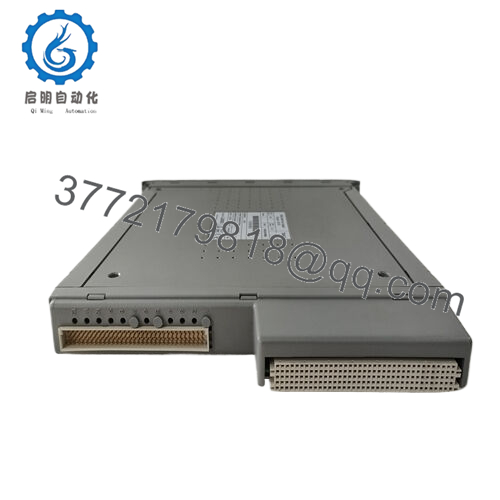
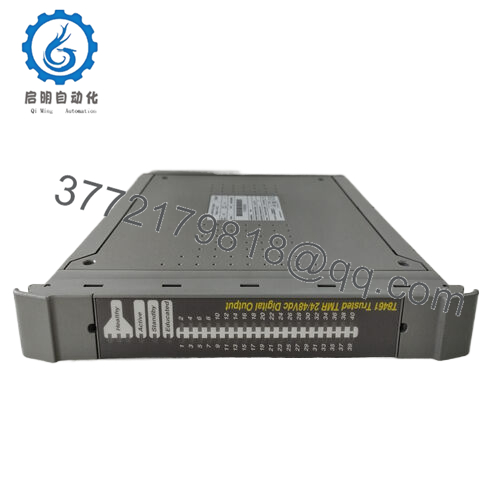
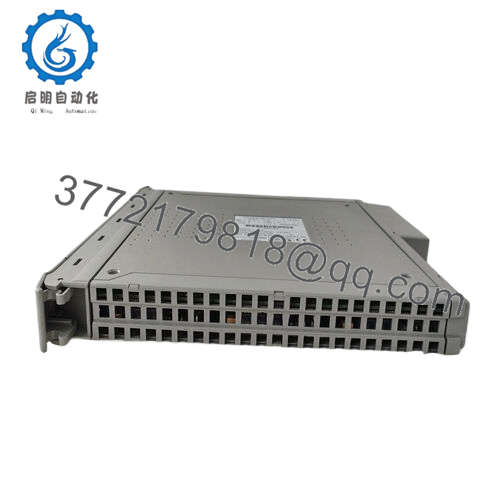
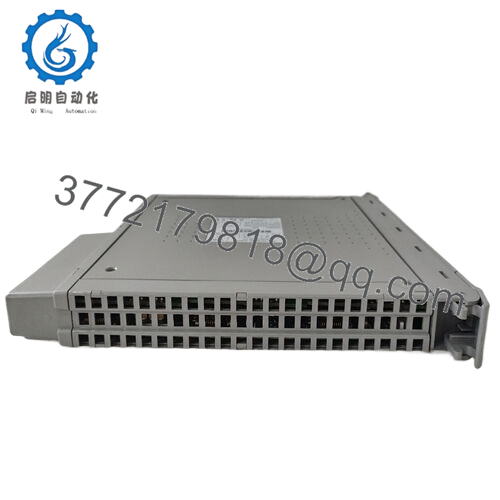
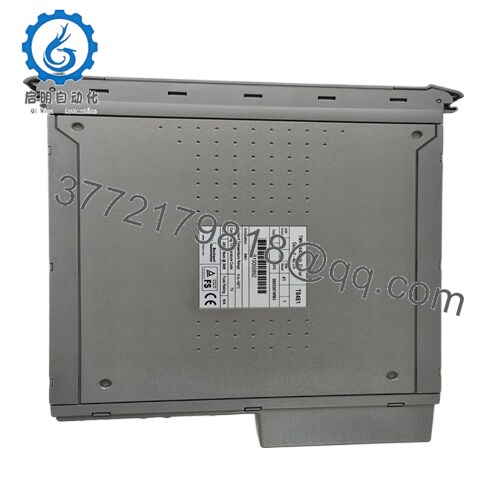
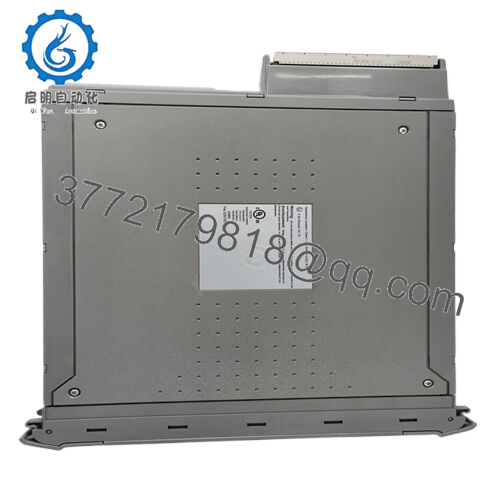
 WhatsApp: +86 16626708626
WhatsApp: +86 16626708626 Email:
Email:  Phone: +86 16626708626
Phone: +86 16626708626


